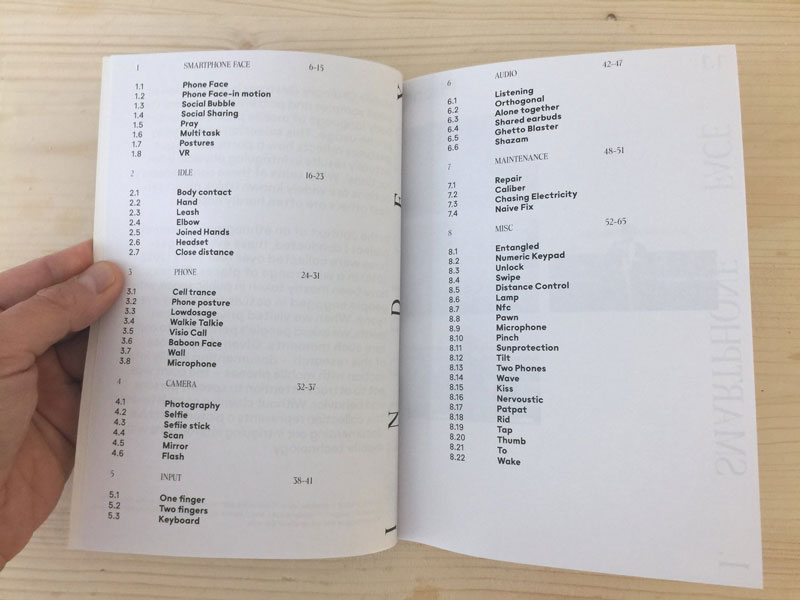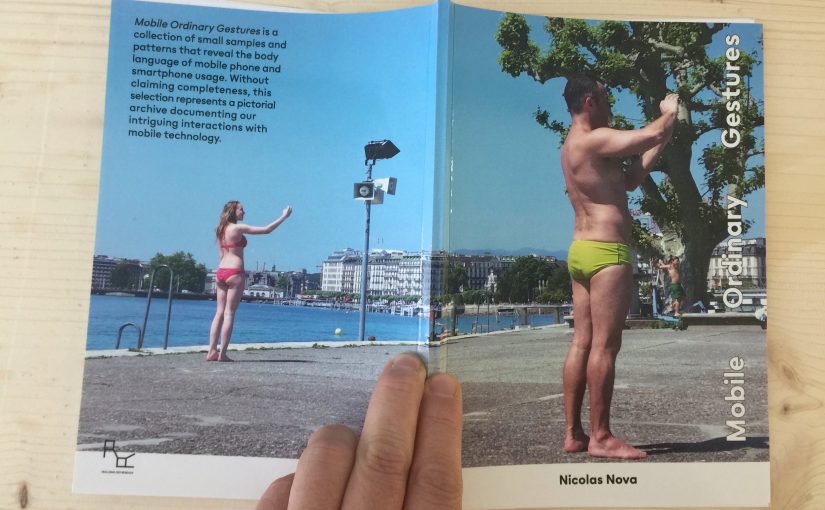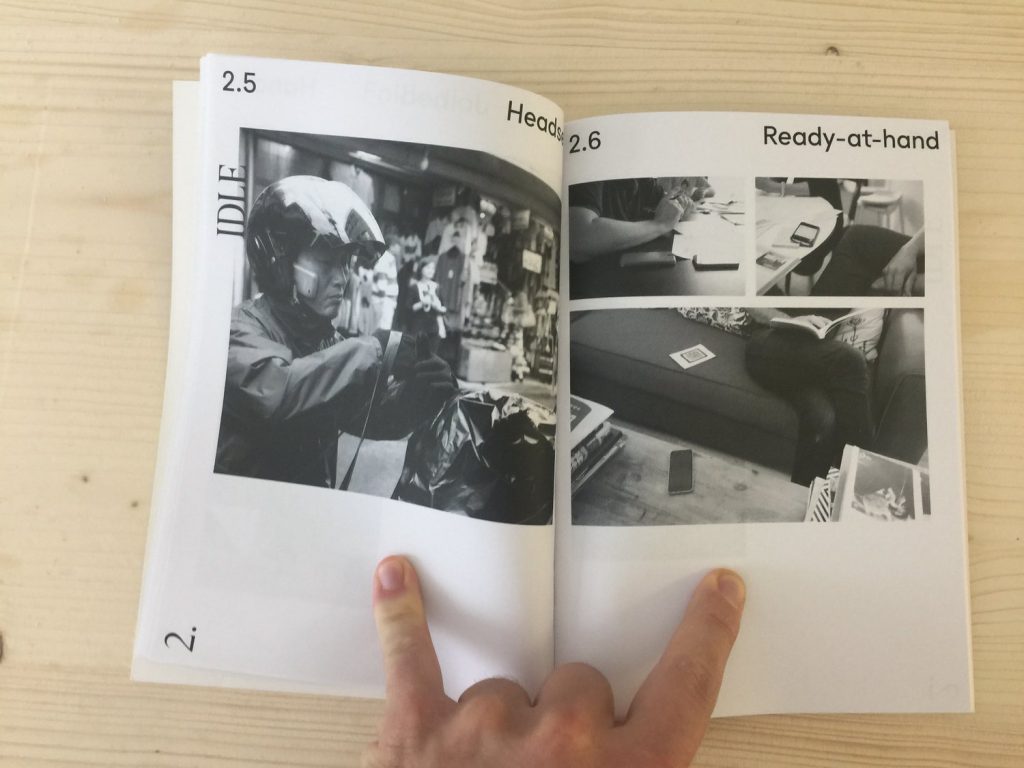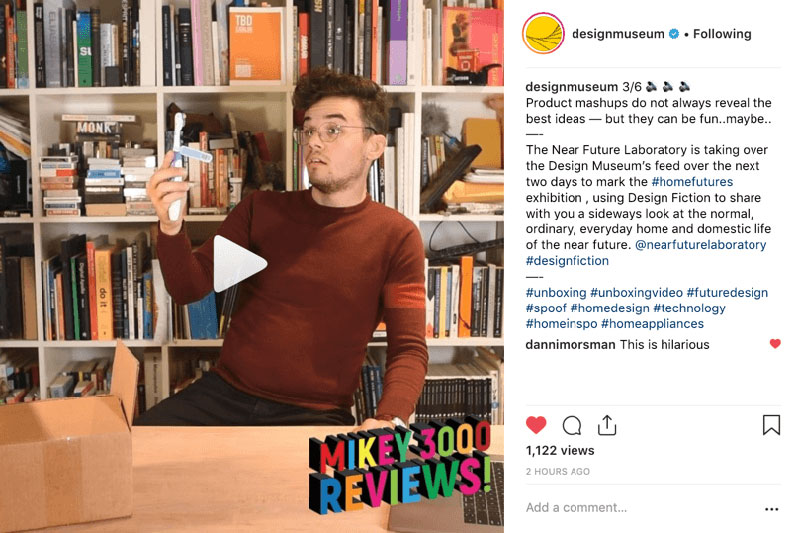Do these selfies taken by two people who don’t know each other give us a glimpse of the future? Will the ever-increasing use of technological devices reconfigure our bodies? Will it affect our posture even in the most banal situations?
Those are some of the questions we asked in Mobile Ordinary Gestures, a booklet that describes a typology of gestures and postures adopted when using smartphones. Without claiming completeness, this selection represents a pictorial archive documenting people intriguing interactions with mobile technology.
Similar to Curious Rituals, we use this type of visual ethnography as signals of change of the present from which to extrapolate when designing futures. The documentation of this current body language can also inform the adaptation of current interfaces, or the creation of products that can support, help or benefit from the gestures and rituals we found.

Get a free digital PDF from our shop, or purchase a normal, human, non-streaming, non-downloading, non-data-using media “hardcopy” through Lulu.com
Paperback by Nicolas Nova (Near Future Laboratory) in collaboration with Constance Delamadeleine (Future Neue)
Publisher: The Near Future Laboratory
Published: October 1, 2016
Language: English
Pages: 68


